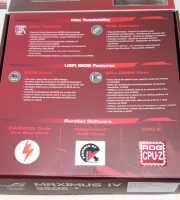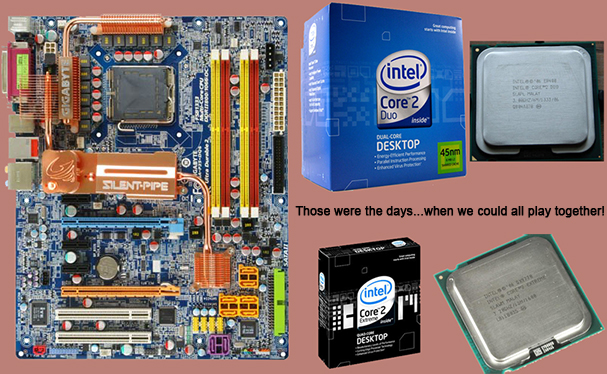


But is all now Haswell? Even a seasoned enthusiast would struggle not to admit that Intel’s rapidly expanding family tree has made 2013 an especially confusing year. Back in the days when both mainstream and high end chipsets incorporated the same socket design, choosing a new motherboard and compatible CPU was relatively straight forward and did little to inhibit the buyer’s subsequent upgrade options.
One could for example have saved a little by purchasing a board based on Intel’s P35 chipset, a product aimed at the mainstream user…initially, they could pair it up with a fast but affordable processor and later decide to replace that processor with a flagship “extreme” model, perhaps one acquired second hand, in order to realize a decent performance increase and postpone the hassle and expense of a full system overhaul.

The launch of Intel’s core i7 cycle of silicon brought with it a new custom whereby enthusiasts and main-streamers were strictly allocated separate tables and menus, aswell as being forced to dine at very different times of the day!
The saga began with the x58, an enthusiast class chipset released in late 2008, which resulted in some of the most stable yet tweakable motherboards ever assembled. Just under a year later its mainstream sibling, the P55 emerged, though in contrast to Intel’s previously released chipsets, each was based around a unique socket design (1366 for the x58 and 1156 for the P55) thus making it physically impossible for the user to play both fields. Nevertheless, of those who chose to invest in either, even early adopters seemed satisfied by the choice, price and performance offered and it could be argued that this policy of separatism initially helped to clarify rather than obfuscate.
Things remained clear enough throughout the subsequent era, but this time it was the mainstream user who was given priority. The p67 and H67 chipsets revealed a new socket design (1155) and a family of CPUs based on Intel’s revolutionary “Sandy Bridge” architecture. They were unleashed in early 2011 and proved a combination that yielded an exceptional level of performance for the price. As the year drew to a close, the x79 along with yet another socket (2011) and its own battalion of “Sandy Bridge -E” processors finally usurped the x58, which had enjoyed a reign of three years as Intel’s flagship platform.
In between each of these major updates, Intel also made adjustments to its core architecture and released additional CPUs for each chipset in order to improve performance and minimize energy consumption. The industry refers to Intel’s habit of “releasing and refining” as the “tick tock” cycle.